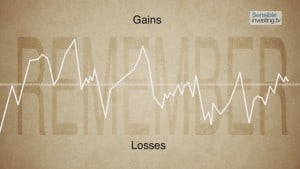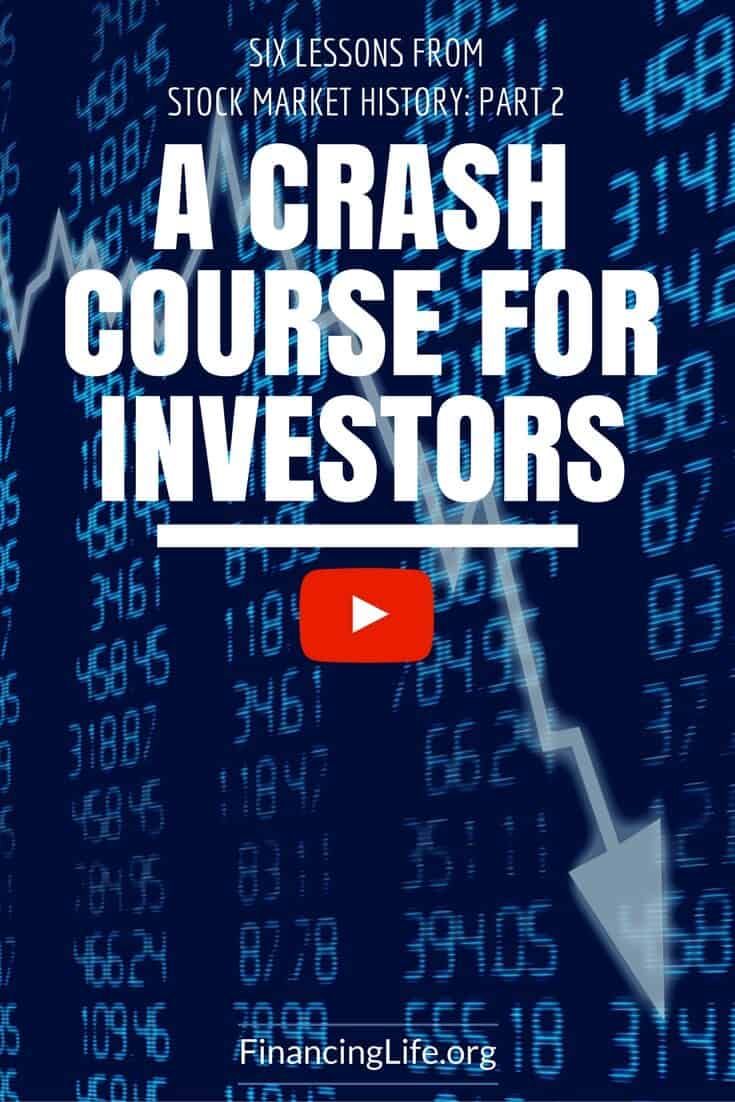This 8-part series about investing in stocks is for beginners who want to learn how to invest. The first lesson to learn from market history is to have realistic market expectations. This outstanding video series was produced by SensibleInvesting.tv. I have created a summary and transcript to help you find spots that interest you and make the best use of your time.
Summary of video: Lessons From Stock Market History Pt.2: market expectations
NEXT STEPS: Watch the 8-part series Lessons from Stock Market History
- Part 1: world stock markets (video)
- Part 2: market expectations (video)
- Part 3: market volatility (video)
- Part 4: stock market timing (video)
- Part 5: keep investing simple (video)
- Part 6: diversify stocks (video)
- Part 7: buy and hold (video)
- Part 8: sensible investing (video)
SensibleInvesting.tv is an independent voice that makes important educational videos about passive investing—the best I’ve seen. This series features some of the biggest names and brightest minds in the investment world. It is presented and produced by Robin Powell and his team at SensibleInvesting.tv, and published on YouTube. It is a great honor to include it in our collection of video tutorials about “Investing in Stocks”.
Key points about investing in stocks from this video:
- We are attracted to spectacular stock market success stories. But the first lesson to learn from market history is to be realistic.
- We’ve been spoiled and come to expect unrealistic returns.
- We are often over-optimistic as human beings.
- It is easy for investors to lose their sense of perspective.
Transcript of: Lessons From Stock Market History Pt.2: market expectations
(At 0:11 start Robin Powell, reporter)
We all know investors who’ve made an absolute killing, and we’re often reading in the media how if only we’d buy this or that asset or investment product, we could make one as well. There are even financial advisors who give the impression that investing is a one way bet. The first lesson to learn from market history is to be realistic.
(0:31 Charles Ellis, Financial author and consultant)
The history is very, very strong long, long, long term. Short term treasuries return the money after inflation but that’s it. You return of the money but no return on the money. Bonds do a little bit better and stocks do better than that.
(0:54 Robin)
One problem is that we’ve lived through an era of unusually high returns. In the second half of the 20th century, equities have performed far better than the historical average. Since 1980, bonds have had an exceptional run and property in most parts of the world has also boomed. In short, we’ve been spoiled and we’ve come to expect returns that are unrealistic.
(1:17 Weston Wellington, Dimensional Fund Advisors)
The phrase that comes back over and over again is this notion of overconfidence. There is a mountain of literature from the psychological field explaining that people for whatever reason exhibit his persistent behavioral characteristic.
(1:37 Prof. Karen Pine, University of Hertfordshire)

When it comes to risk, we’re often over-optimistic as human beings. We think that we’re willing to take more risk than we actually are. I think it might be a good idea to really review your past behaviors and see not only the good things that have happened and the gains, but remember the losses as well.
(1:55 Robin)
Humans are also very social animals. We like to do what other are doing. When we see people making money, we want to pile in too. That ultimately is what makes markets unstable.
(2:08 Prof. Elroy Dimson, London Business School)
What return do we expect when markets are going through a period of investor enthusiasm? What risks seem low, so we don’t require a very large return. What growth rates are we expecting? We’re expecting very large growth rates. That’s quite fragile, so the more confident people feel about the future, the more a tiny nudge in perceived risk or a tiny nudge in prospective growth rates can seriously knock the growth rate down.
(2:38 Robin)
That’s exactly what happened in 1846. Behind me is Curzon Street Station in Birmingham. It opened in 1838 at the start of a boom period for the British Railway industry. Everyone wanted shares in the newly formed railways companies, after all railways were the future.
(3:00 Prof. Janette Rutterford, Open Business School)
People started seeing the prices going up and wanted to buy and ordinary individuals such as the Bronte’s actually speculated in railway shares. People started making a lot of money and prices eventually fell because there wasn’t enough traffic to support all these railway companies.
(3:16 Robin)
Of course railways did become very popular in just the same way technology has become a major part of peoples’ lives despite the bursting of the dot com bubble. But both episodes show how easy it is for so many investors to lose their sense of perspective.
(3:34 Dr. David Chambers, University of Cambridge)
Almost certainly it will happen again whether it’s the investment community selling stocks or whether it’s media commenting on the markets, and this whole idea of new era thinking will reemerge. When that will happen, I don’t know, but I will guarantee you that it will happen.
(3:51 Robin)
Of course being realistic is one thing, but if all this talk about bubbles and crashes is putting you off investing all together, that’s certainly not our intention. We’ll explain why in part three.
Footnotes and Credits:
This video was produced by SensibleInvesting.tv and published on YouTube July 26, 2013 on their YouTube channel SensibleInvesting. Their videos are the best I’ve seen on this topic. They produce them and own the copyright. They have given me permission to embed this via YouTube license onto this educational website.
Sensibleinvesting.tv provides information and opinion on low-cost, evidence-based (passive) investing. They are based in the United Kingdom, but their lessons are universal.
********* Please Share **********
If you like this video, please share this pin and follow me on Pinterest. It’s an easy way for you to help others to find this educational resource.

